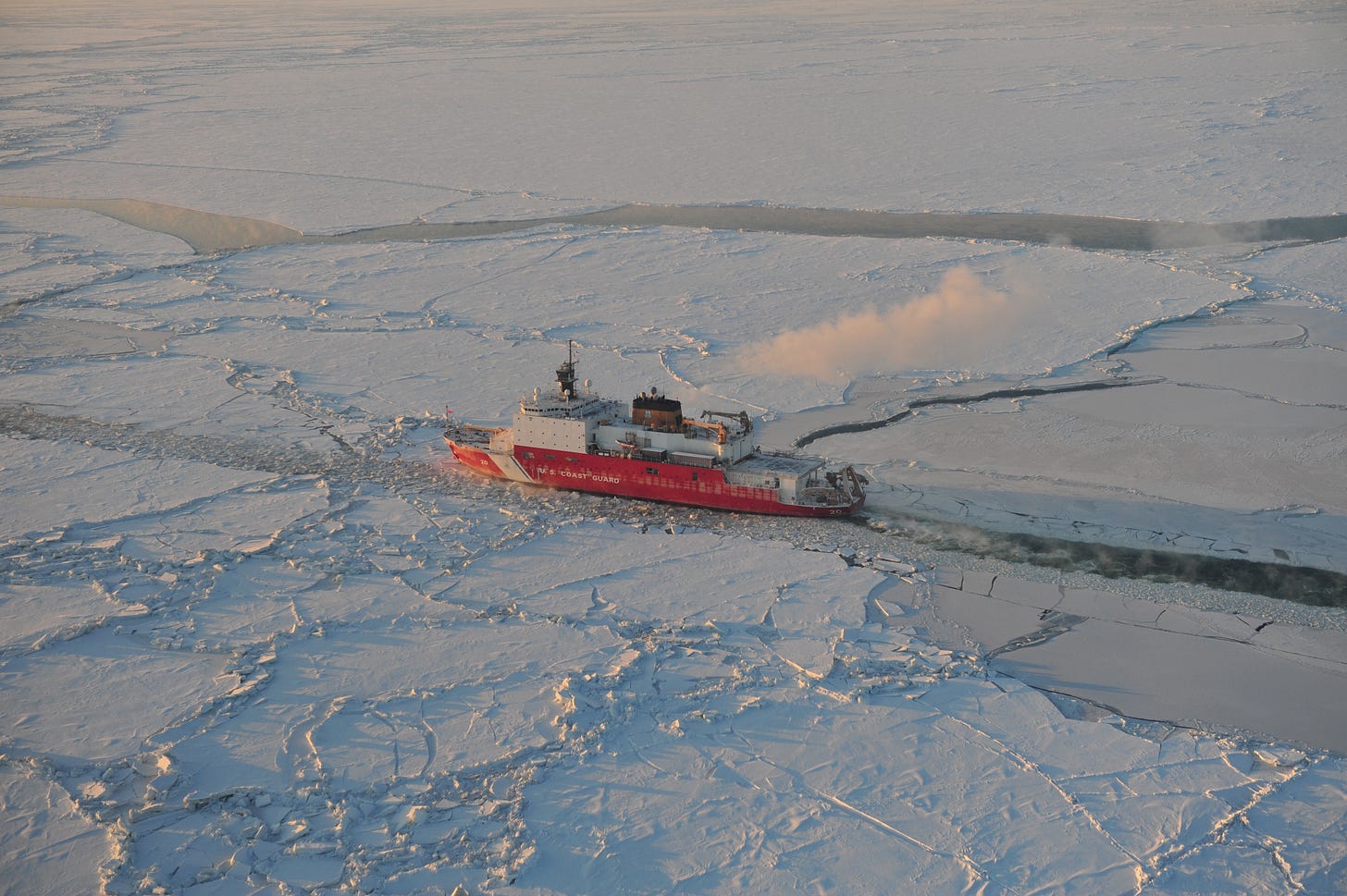The Icebreaker Imperative, with CDR Salamander and Mark Tempest
A link to my December 15th conversation with Sal and Mark on their Midrats podcast.

Thanks to Sal and Mark (from eaglespeak) for hosting me on their Midrats1 podcast yesterday. I enjoyed our conversation and could have easily continued it for another hour or two. We covered a lot of ground, but there is always more to talk about.
You can listen to the podcast here or through the Spotify widget:
To see a summary and breakdown of the episode by time, head on over to CDR Sal’s post about it:
Note that the summary isn’t quite correct- I don’t think we need to arm this next round of icebreakers with more than small arms. We should instead treat these vessels as auxiliaries and build them to commercial standards. If defensive systems (larger than small arms) are required, auxiliary icebreakers can escort a warship into the area. For now, we need Arctic and Antarctic presence to surveil and patrol our own waters, perform basic law enforcement and search and rescue missions, support U.S. interests in Antarctica, and ensure that the Navy can get everywhere that it might need to go.
What are you waiting for? Go have a listen and let me know if you have any questions. I’ll be happy to answer them in the comments or in a future Substack post.
More articles coming soon.
All the Best,
PGR
Midrats- short for “midnight rations” is the meal served on U.S. Navy ships around midnight, typically 2300-0100 or so, for those coming on or going off of watch. Midrats, along with the late night/early morning watches themselves, are where some of the best conversations happen aboard ship.





Some very excellent analysis in this podcast. The only weak point was the attribution of the Coast Guard’s reluctance to accept Aiviq solely to institutional intransigence. The Coast Guard has some experience with Aiviq, having investigated its pivotal role in the grounding of the drill rig Kuluk in 2012. That accident resulted directly in Shell’s termination of Arctic work offshore Alaska and consequently, delegation of Aiviq to the status of ship without a contract and the motivation of its owners to unload it. That has now occurred, at the tail end of some very significant and targeted political contributions. I went to sea commercially under the US flag for over 40 years, 31 of that in command, some of that in the ice. The Master of the Aiviq at the time of the Kuluk tow was a colleague of mine. Since he’d been placed in command of the vessel he’d reported the unsuitability of the ship for the high latitude conditions it was built for and offered mitigations. The deficiencies included trim and stability issues, the fuel system, and retention of hundreds of tons of seawater on the aft deck during even moderately heavy weather. The Coast Guard knows this as well. Over the course of my career I was a plank owner on several vessels and spent most of my time on ships younger than 10 years of age. At least part of the problem with shipbuilding in the US is that the modern design process seems to take into consideration customer requirements for overall capabilities, capacities, and work space desires first, then fit that into an often high-windage, ungainly and slab-sides platform that will meet regulatory requirements. Those regulatory requirements generally preclude structural failure if scantlings and loading guidance are maintained and certainly address intact and damage stability. What they don’t do in a systematic way is address the sea-kindliness of the ship, or even it’s real seaworthiness. There’s more to it than adequate metacentric height. Aiviq suffered from this as much or more than most of her contemporaries coming out of commercial yards. An anecdote may illustrate the broad problem more succinctly: I once took delivery of a new vessel and, standing at the aft control station with the shipyard representative, asked why there were no wipers on the windows directly in front of the controls. I was told the inboard angle would keep the rain off, and spray would never get that high.